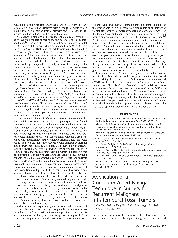摘要
Background: Because of the complexity of the local anatomy, tumors in the infratemporal fossa present a great challenge to oral and maxillofacial surgeons. Recurrent malignant tumors in this area are particularly difficult and precarious to resect because scars from previous operations may dislocate some important structures. @@@ Methods: From August 2010 to December 2013, all recurrent cases of malignant infratemporal fossa tumors at Peking University Stomatological Hospital were enrolled in this study. The patients were divided into 2 groups: the navigation group and the nonnavigation group, with different managements. The following factors were evaluated: operation time, bleeding volume, tumor size, surgical approach and complications, follow-up survey, and outcomes. In addition, survival analyses were performed for all patients. @@@ Results: In total, 42 patients were investigated. The mean operation time for the navigation group was not significantly longer than that of the nonnavigation group (283.64 versus 252.10 min, respectively; P = 0.393); the group's mean intraoperative bleeding volumes were similar (536.36 versus 503.87 mL, respectively; P = 0.814). The surgical approach was determined and categorized as an inferior approach (transmandibular approach, with or without splitting of the mandible), anterior approach (transmaxillary approach), lateral approach (subtemporal-preauricular approach), or combined approach. The inferior approach was most frequently used in both groups (ie, 63.6% for the navigation group and 80.6% for the nonnavigation group). The tumors were completely resected in 4 patients from the navigation group and 24 patients from the nonnavigation group. Regarding complications in the navigation and nonnavigation groups, the incidence was not significantly different (27.2% versus 41.9%, respectively; P = 0.485). The 3-year survival for patients in the navigation group was 71.6% compared with 52.9% in the nonnavigation group, with no significant difference. In the survival analysis, no significant factor was determined. @@@ Conclusions: A computer-aided navigation technique has been successfully introduced to resect infratemporal fossa tumors and was successfully applied to the resection of recurrent malignant tumors. This new technique alone does not determine the outcome of patients with recurrent malignant infratemporal fossa tumors. Although some improvements are necessary, the visible navigation during surgery could increase the accuracy and safety of the operations and enhance surgeon confidence.
- 出版日期2015-3
- 单位北京大学
